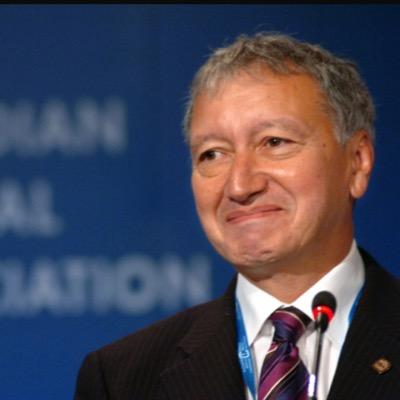
How Uncle Jack found salvation
Dec 09, 2005
Calgary Herald
 How Uncle Jack found salvation
How Uncle Jack found salvation
George Koch and John Weissenberger
Friday, December 9, 2005
This is a story about how Canada's public health-care system let one man down, and how private, for-profit medicine gave him his life back.
He's a close relative to one of us. To protect his privacy, and avoid inflaming those he's critical of, we'll call him Uncle Jack. We've changed nothing but names, however.
Until just more than a year ago, Uncle Jack was a vigorous gentleman in his late 70s. He and his wife -- call her Charlotte -- kept a wide circle of friends and travelled frequently. They'd had medical issues, including broken limbs and heart surgery, but nothing unmanageable.
One day in summer 2004, Uncle Jack woke up with aching legs. Just one more challenge, he thought. But these aches became chronic, merciless, unremitting. Powerful painkillers barely helped.
Uncle Jack was baffled when his family physician seemed indifferent. Perhaps it was fibromyalgia, he mused, or maybe polymyalgia, or maybe diabetic neuropathy, or perhaps the side effects of Lipitor heart medication. The message seemed: suck it up.
His doctor declined to refer him to any specialists, steering him to physiotherapy and the chiropractor. They didn't help. While acupuncture dulled the pain, Uncle Jack still grew concerned; when you have mysterious pain in your bones, you think of the "C" word.
X-rays, which took three months to arrange, revealed nothing conclusive. Nor, four months after that, did a bone scan. At 79, every month is precious.
The pain began to wear down the usually ebullient Uncle Jack. His confident stride became a stooped hobble. He and Charlotte gave up their beloved walks. Sitting was OK, but getting up was agony, and every step caused a wince. Pain was slowly killing him.
Uncle Jack repeatedly asked his physician about an MRI. Out of the question, said the man whose job was to look after Uncle Jack's health.
In September, Uncle Jack and Aunt Charlotte set off on their semi-annual camping trip to Montana. As much as he loved the open road, Uncle Jack realized the pain was winning -- they'd have to turn back.
In Bozeman, a city of about 30,000, Uncle Jack drove up to a medical clinic, walked in and asked about an MRI. The friendly staff said he could see a doctor right away. The stranger's physical exam and consultation were more thorough than anything Uncle Jack had received from his Canadian doctor.
Hearing Uncle Jack's litany of pain, the doctor called the MRI provider, a for-profit diagnostic clinic launched by local businesspeople. At 5 p.m. the same day, Uncle Jack left that clinic with a written medical report and the MRI data burned to a CD. The price: just under $1,200 US, discounted by 15 per cent for paying on the spot.
Back home, Uncle Jack's physician was miffed his patient had circumvented the "system." Yet, the Montana visit had achieved what he hadn't: a diagnosis. Uncle Jack had lumbar stenosis. Deteriorated spinal discs had caused cartilage growth, squeezing the spinal nerves. Result: excruciating pain. Happily, this condition is surgically curable.
A seeming breakthrough, but the public system again proved unmoveable. Surgery would be months away. Even a consultation for an interim cortisone injection (suggested in Montana) was many weeks off.
Now 80, Uncle Jack was fed up with merely enduring. Newspaper articles and Internet research led him to the Cambie Surgery Centre, a Vancouver clinic that performs contract procedures for the B.C. government -- and private services for cash. The Cambie offered to see him within two weeks.
Uncle Jack leaped at the opportunity. The consultation went well, and in early November a neurosurgeon operated on his back.
Uncle Jack woke up without pain, and walked out two days later. He and Aunt Charlotte flew home, pain-free. The cost: $12,000, plus flights and hotel nights.
Private, for-profit health care gave back Uncle Jack the life he loves, Aunt Charlotte her husband of old, and Uncle Jack's friends and relatives the man they remembered. Today he stands straight, the contortions in his face have melted away, and his smile is real again.
We're not indicting the thousands of fine people working in public health care. Others we know have received superb, life-saving care from it.
However, Uncle Jack's ordeal suggests Canada's system is so overloaded, so inflexible, so bureaucratic, that when things go wrong, a patient can become trapped in a private hell.
Uncle Jack paid a steep, personal price for our system's shortcomings.
He found a way out -- private, for-profit health care in Montana and B.C. But why did he have to wait so long, and travel so far?
In our Canada, where it's legal for anyone to spend their last dime on booze or VLTs, where the prime minister has a private physician, where house pets routinely receive next-day surgery, why is it illegal to spend your own money to save your own health?
George Koch is a Calgary freelance writer. John Weissenberger is a Calgary geologist. More of their writing can be read at their weblog, www.drjandmrk.com




 How Uncle Jack found salvation
How Uncle Jack found salvation